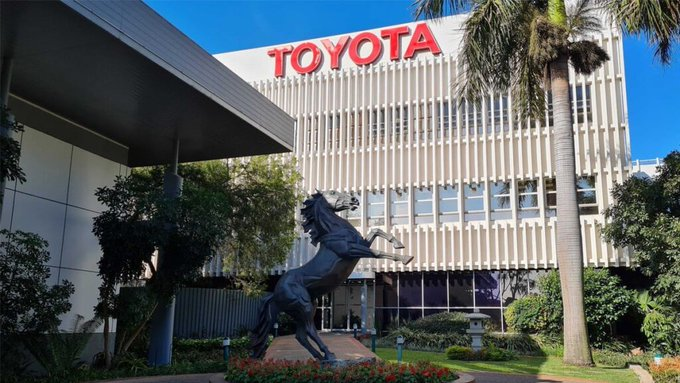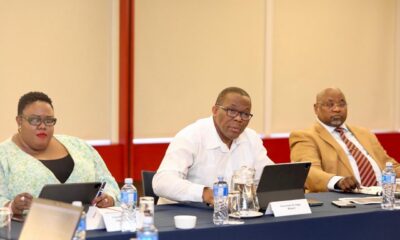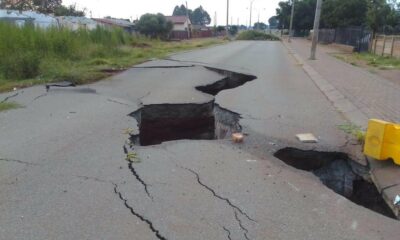Business
Toyota’s Insurer Sues KZN Government, Transnet, and eThekwini for R6.5 Billion Over 2022 Flood Damage

The 2022 KwaZulu-Natal floods left Toyota’s Durban plant in ruins. Now, its insurer is taking the government to court, accusing it of neglecting key infrastructure that should have prevented the disaster.
Two years after torrential rains brought KwaZulu-Natal to its knees, the aftermath of the April 2022 floods is still playing out this time in the Durban High Court.
Toyota’s insurer, Tokio Marine & Nichido Fire Insurance, has filed a massive R6.5 billion lawsuit against the KwaZulu-Natal provincial government, Transnet, and the eThekwini Municipality, holding them responsible for the catastrophic damage to Toyota South Africa Motors’ (TSAM) Prospecton plant in Durban.
The case could set a precedent for how public infrastructure failures are handled when they impact major industries and the broader economy.
What’s Behind the Lawsuit?
At the heart of the legal battle is the Umlaas Canal and a diversion berm, key elements of the flood control system meant to protect the Prospecton Industrial Area.
According to the court papers, the insurer claims that:
-
Transnet, which owns and is responsible for maintaining the Umlaas Canal, failed to do so.
-
The KZN Department of Transport did not ensure that the diversion berm functioned as intended.
-
The eThekwini Municipality neglected to maintain the broader stormwater infrastructure.
This alleged trifecta of failure, the insurer argues, allowed stormwater to breach the barriers and submerge the Toyota plant. The result? 4,300 vehicles destroyed, factory shutdowns, and over R6.5 billion in combined repair and business interruption losses.
Who’s Actually Suing?
While Toyota SA Motors is the named plaintiff, it’s actually Tokio Marine pulling the legal strings.
“This is a classic case of subrogation,” explained Craig Woolley from law firm Norton Rose Fulbright, which filed the summons. “The insurer covers the loss, then steps into the shoes of the insured to recover those costs from liable third parties.”
Toyota has made it clear that it has no financial interest in the case. “TSAM will not benefit in any way from the subrogated recovery action,” the company said in a statement.
A Factory Brought to Its Knees
Back in April 2022, the floods caused chaos across KwaZulu-Natal, prompting President Cyril Ramaphosa to declare a national state of disaster. But few industrial sites were hit harder than Toyota’s 87-hectare Prospecton plant.
-
Electrical, mechanical, and IT systems were destroyed.
-
Thousands of vehicles were damaged beyond repair.
-
Over 100,000 new parts had to be flown in to replace flood-ravaged equipment.
-
Production halted for more than three months, leading to lost output across Toyota’s domestic and export supply chains.
A Toyota executive at the time described it as the “most severe damage to any Toyota plant worldwide.”
Massive Investments After the Storm
Rather than wait for help, Toyota spent R236 million of its own funds on prevention and protection after the disaster:
-
R108 million went toward early-warning systems, stormwater upgrades, and perimeter canals.
-
R128 million was used for internal defences like bund walls and elevated doorways.
These interventions were designed to protect the plant from future floods — even if public infrastructure fails again.
Why This Case Matters
This isn’t just a matter of insurance money. The lawsuit raises thorny questions about:
-
Who is accountable when government infrastructure fails?
-
What role do state-owned enterprises like Transnet play in disaster prevention?
-
Can private companies sue the state for neglect and win?
If successful, the case could open the door for more legal action from businesses affected by floods, fires, and other disasters linked to poor maintenance of public infrastructure.
The Bigger Picture: A Warning for Infrastructure Failures
This lawsuit highlights a painful reality in South Africa: much of the country’s public infrastructure is in a state of decay and businesses are paying the price.
As climate change fuels more extreme weather events, the risk of these failures will only grow.
Whether the defendants are ultimately found liable or not, the message from the insurance industry is loud and clear: infrastructure negligence has consequences and someone’s going to pay.
For now, that fight begins in the Durban High Court.
{Source: BusinessTech}
Follow Joburg ETC on Facebook, Twitter , TikTok and Instagram
For more News in Johannesburg, visit joburgetc.com


























